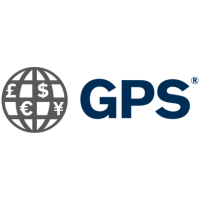Currency exposure risk is an inherent outcome of engaging in the FX market. This uncertainty can impact transactional cash flows, making it imperative for corporations to employ effective risk management strategies.
One such crucial strategy is Foreign Exchange (FX) Hedging. It is crucial to understand that the purpose of hedging practices is not profit generation. The primary goal is to safeguard the company and prevent significant financial losses.
So, what is FX hedging?
FX hedging involves the use of financial instruments to offset or reduce the risk associated with currency exchange rate movements. There are a variety of common instruments corporations use to hedge, such as forward contracts, options, swaps, and netting. We’ll dive in further on these individual instruments later.
The Role and Benefits of FX Hedging
There are significant benefits that come along with the time and implementation of having GPS Capital Markets come in and advise each of its clients about their FX exposure risk. Let’s discuss why this is such an important aspect of each multinational corporation doing business.
Hedging your cash flows is crucial in managing financial risks, ensuring stability and predictability by protecting the company from adverse movements. Hedging can also allow for better budgeting and financial planning as it provides a degree of certainty for future cash flows. This is particularly important when dealing with international transactions where you can be subject to significant fluctuations and the need to protect your profit margins. Better predictability also leads to greater confidence for management to make strategic decisions related to investments, expansions, and other business initiatives.
Something often not considered is the benefit of improved relationships with creditors, which leads to potentially lower borrowing costs. Creditors love the predictability they can see with future cash flows. Lastly, hedging activities are often subject to accounting and regulatory standards. Properly executed cash flow hedging can help the corporation comply with these compliance standards and provide accurate financial reporting.
In summary, 6 of the main benefits of incorporating an FX hedging program are:
1. Risk Mitigation
2. Financial Stability
3. Budgeting and Planning
4. Protecting Profit Margins
5. Enhancing Creditworthiness
6. Compliance and Reporting











